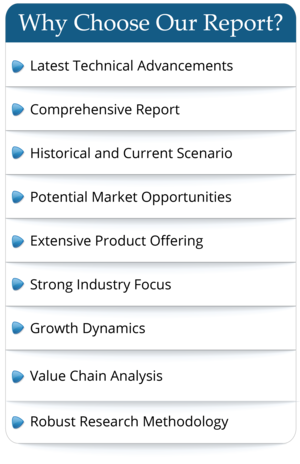Global Alternative Fuel Vehicle (AFV) Industry Research Report, In-depth Analysis of Current Status and Outlook of Key Countries 2023-2028
SKU ID : Maia-23513535 | Publishing Date : 14-Apr-2023 | No. of pages : 101
Market Overview
of Global Alternative Fuel Vehicle (AFV) market:According to our latest research, the global Alternative Fuel Vehicle (AFV) market looks promising in the next 5 years. As of 2022, the global Alternative Fuel Vehicle (AFV) market was estimated at USD XX million, and it’s anticipated to reach USD XX million in 2028, with a CAGR of XX% during the forecast years.
An alternative fuel vehicle (AFV) is a vehicle that runs on substances other than the conventional petroleum gas and diesel.
The classification of Alternative Fuel Vehicle includes Electricity, Natural Gas /Compressed Natural Gas and Others, and the proportion of Electric vehicle in 2018 is about 66.48%.Alternative Fuel Vehicle is widely used in home use and commercial use. The most proportion of Alternative Fuel Vehicle is home use, and consumption proportion in 2018 is about 84.69%.China is the largest consumption region of Alternative Fuel Vehicle, with a consumption market share nearly 39.08% in 2018. Europe is the second largest consumption of Alternative Fuel Vehicle, enjoying production market share nearly 25.61% in 2018.Market competition is not intense. Tesla, BMW Group, BYD, Yutong, Daimler AG, BAIC, Renault, Toyota Motor Corporation, General Motors, SAIC, Geely, etc. are the leaders of the industry, and they hold key technologies and patents, with high-end customers; have been formed in the monopoly position in the industry.
This report covers a research time span from 2018 to 2028, and presents a deep and comprehensive analysis of the global Alternative Fuel Vehicle (AFV) market, with a systematical description of the status quo and trends of the whole market, a close look into the competitive landscape of the major players, and a detailed elaboration on segment markets by type, by application and by region.
Key Takeaways from the Global Alternative Fuel Vehicle (AFV) Market Report:
Market Size Estimates: Alternative Fuel Vehicle (AFV) market size estimation in terms of value and sales volume from 2018-2028
Market Trends and Dynamics: Alternative Fuel Vehicle (AFV) market drivers, opportunities, challenges, and risks
Macro-economy and Regional Conflict: Influence of global inflation and Russia & Ukraine War on the Alternative Fuel Vehicle (AFV) market
Segment Market Analysis: Alternative Fuel Vehicle (AFV) market value and sales volume by type and by application from 2018-2028
Regional Market Analysis: Alternative Fuel Vehicle (AFV) market situations and prospects in North America, Asia Pacific, Europe, Latin America, Middle East, Africa
Country-level Studies on the Alternative Fuel Vehicle (AFV) Market: Revenue and sales volume of major countries in each region
Alternative Fuel Vehicle (AFV) Market
Competitive Landscape
and Major Players: Analysis of 10-15 leading market players, sales, price, revenue, gross, gross margin, product profile and application, etc.Trade Flow: Import and export volume of the Alternative Fuel Vehicle (AFV) market in major regions.
Alternative Fuel Vehicle (AFV) Industry Value Chain: Alternative Fuel Vehicle (AFV) market raw materials & suppliers, manufacturing process, distributors, downstream customers
Alternative Fuel Vehicle (AFV) Industry News, Policies & Regulations
Key players in the global Alternative Fuel Vehicle (AFV) market are covered in Chapter 12:
Mitsubishi
Tesla
Dongfeng
Chery
Changan
Volkswagen
JMCG
Daimler AG
General Motors
Renault
Zotye
SAIC
Hyundai
Yutong
BYD
BAIC
Geely
Ford
JAC
Honda
Toyota Motor Corporation
BMW Group
Fiat Chrysler Automobiles
In Chapter 2 and Chapter 15.1, based on types, the Alternative Fuel Vehicle (AFV) market from 2018 to 2028 is primarily split into:
Electric Vehicle
Natural Gas/Compressed Natural Gas
Others
In Chapter 3 and Chapter 15.2, based on applications, the Alternative Fuel Vehicle (AFV) market from 2018 to 2028 covers:
Home Use
Commercial Use
Geographically, the detailed analysis of consumption, revenue, market share and growth rate of the following regions are covered in Chapter 7, 8, 9, 10, 11, 15.3, 15.4:
North America (Covered in Chapter 7)
United States
Canada
Asia-Pacific (Covered in Chapter 8)
China
Japan
India
South Korea
Southeast Asia
Australia
Others
Europe (Covered in Chapter 9)
Germany
France
UK
Italy
Spain
Russia
Poland
Others
Latin America (Covered in Chapter 10)
Mexico
Brazil
Argentina
Others
Middle East and Africa (Covered in Chapter 11)
GCC Countries
Africa
Others
The data of this research report is mainly obtained from industry associations, magazines, press releases, national customs, annual reports of enterprises, expert interviews, paid databases and other channels with authority. It also provides scientific forecasts of the industry's core development indicators through professional analysis and forecasting models.
In short, whatever role you take in this industry value chain, this report will help you or your company to acquire a systematic and in-depth understanding of the industry.
Chapter Outline
This report consists of 16 chapters. Below is a brief guideline to help you quickly grasp the main contents of each chapter:
Chapter 1 starts the report with an overview of the Alternative Fuel Vehicle (AFV) market, as well as the definitions of the target market and the subdivisions. Through the presented global market size, regional market sizes, and segment market shares, you will be able to draw an overall and comprehensive picture of the market situation. Meanwhile, the research method and data source will be shared in this chapter.
Chapter 2 and Chapter 3 breaks down the market by different types and applications, with historic data presented in metrics of sales volume, revenue, market share and growth rate.
Chapter 4 elaborates on market dynamics and future trends in the industry, which contains an in-depth analysis of market drivers, opportunities, challenges, and risks. Other essential factors that will have a major impact on the market, i.e., industry news and policies in recent years, global inflation, and regional conflict, are also taken into consideration.
Chapter 5 compares the sales volume and revenue of the major regions across the globe, which enables the readers to understand the regional competitive pattern.
Chapter 6 is the analysis of the trade flow. Import volume and export volume are revealed on a regional level.
Chapters 7-11 focus on country-level studies. Data from the major countries in each region are provided, showing the current development of the industry in different countries. Besides, you will also find qualitative trends analysis under global inflation under each of the 6 regions.
Chapter 12 first up presents the competitive landscape by displaying and comparing the revenues, sales volumes, and market shares of the top players in the market, followed by a company-by-company analysis of all the major market participants with introductions of their products, product applications, company profiles, and business overview. In addition, their competitiveness is manifested through numbers of sales volume, revenue, price, gross and gross margin.
Chapter 13 looks into the whole market industrial chain, ranging from the upstream key raw materials and their suppliers to midstream distributors and downstream customers, with influences of global inflation taken into consideration.
Chapter 14 is perfect for those who wish to develop new projects in the industry. This chapter sheds a light on industry entry barriers and gives suggestions on new project investments.
Chapter 15 forecasts the future trend of the market from the perspective of different types, applications, and major regions.
Chapter 16 is the conclusion of the report which helps the readers sum up the main findings and insights.
Years considered for this report:
Historical Years:
2018-2022Base Year:
2022Estimated Year:
2023Forecast Period:
2023-2028Frequently Asked Questions
- By product type
- By End User/Applications
- By Technology
- By Region

 Pre-order Enquiry
Pre-order Enquiry Request Free Sample
Request Free Sample


 Request Sample
Request Sample Request Discount
Request Discount










